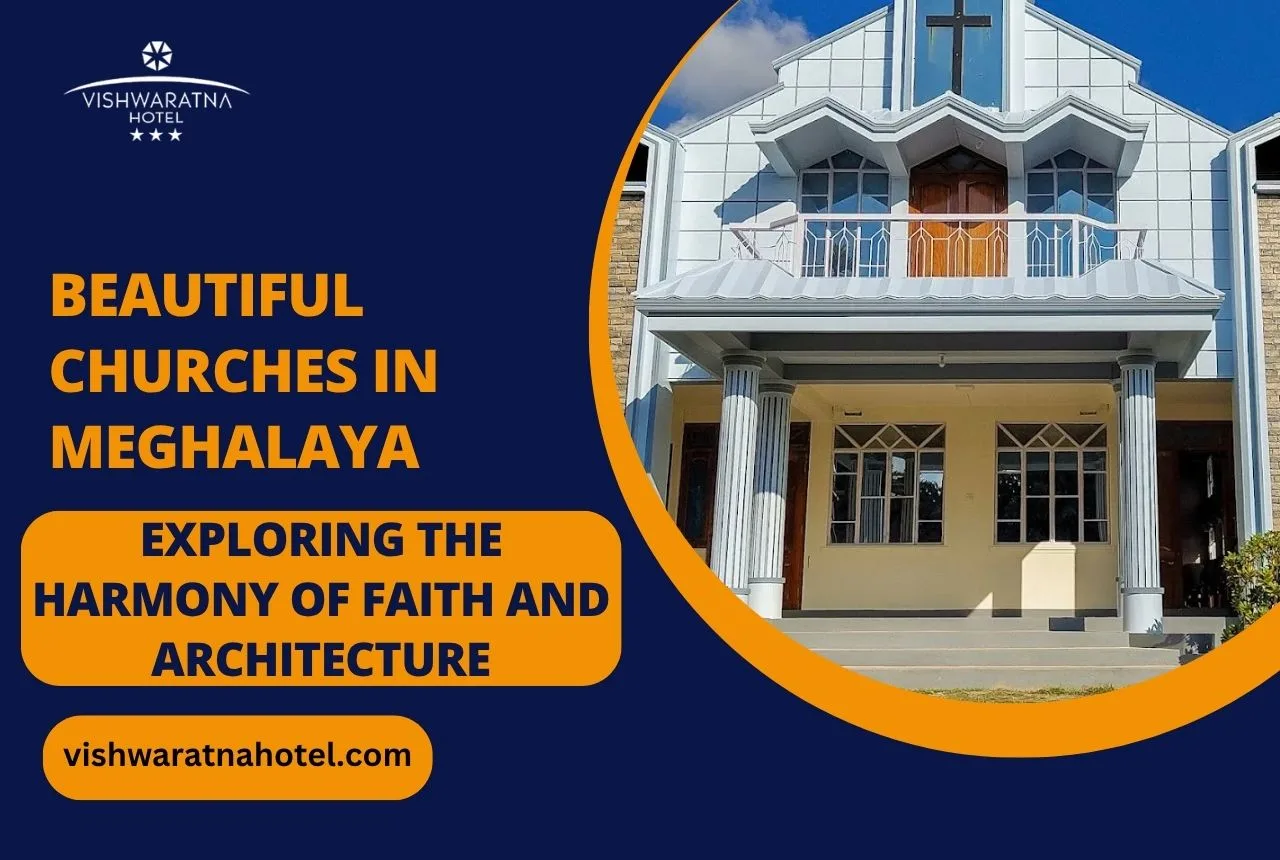Explore the Beautiful Churches in Meghalaya—architectural marvels that reflect the state’s rich Christian heritage and stunning natural surroundings.
Nestled in India’s northeastern frontier, Meghalaya—literally “the abode of clouds”—is celebrated for its mist-shrouded hills, living root bridges, and cascading waterfalls. Yet beyond its natural wonders, the state’s landscape is punctuated by beautiful churches in Meghalaya whose soaring spires and stained-glass windows speak to a deep-rooted Christian heritage.
Introduced by British missionaries in the 19th century, Christianity quickly resonated with the Khasi, Garo, and Jaintia peoples, leading to the erection of majestic sanctuaries that blend European styles with indigenous artistry.
Today, these churches are more than places of worship—they are architectural landmarks and cultural touchstones reflecting both spiritual grace and the region’s unique identity.
Beautiful Churches in Meghalaya: Architectural Wonders Amidst Natural Splendor
The beautiful churches in Meghalaya showcase a fascinating fusion of Gothic, neo-Romanesque, and local Khasi elements. Missionaries from Europe and Bengal brought blueprints featuring pointed arches, ribbed vaults, and flying buttresses, while local craftsmen infused these designs with Khasi woodwork, slate roofing, and indigenous motifs.
During the late 19th and early 20th centuries, as Christianity spread across the hills, villages commissioned churches that would stand as symbols of faith and progress. The luminous stained-glass windows often depict biblical scenes alongside carvings of Khasi flora, creating a dialogue between imported theology and native tradition.
Perched on verdant hillsides or nestled in valley floors, these edifices complement their surroundings: whitewashed walls echo the monsoon clouds, and spires reach skyward in harmony with bamboo groves. Visitors marvel at how the morning sun filters through colored panes, casting kaleidoscopic patterns on the stone floors.
Besides serving as centers for Sunday services and festivals, many churches welcome tourists eager to admire their craftsmanship and soak in panoramic views of the Brahmaputra plains or the distant Himalayas. In Meghalaya, churches are not merely spiritual havens; they are living galleries where architecture and nature meet in serene accord.
5 Magnificent Churches That Define Meghalaya’s Spiritual Landscape
1. Cathedral of Mary Help of Christians, Shillong
Situated atop a ridge in Shillong, the Cathedral of Mary Help of Christians is easily accessible via the Jawaharlal Nehru Road. Rebuilt after a devastating fire in 1936, this Gothic-style landmark features twin spires, pointed lancet windows, and an underground grotto replicating Lourdes.
From the elevated terrace, worshippers and visitors enjoy sweeping vistas of the Brahmaputra River valley and snow-capped Himalayan peaks. Beyond its ecclesiastical role, the cathedral hosts cultural events and candlelight processions during Christmas, solidifying its status as a spiritual and communal nucleus.
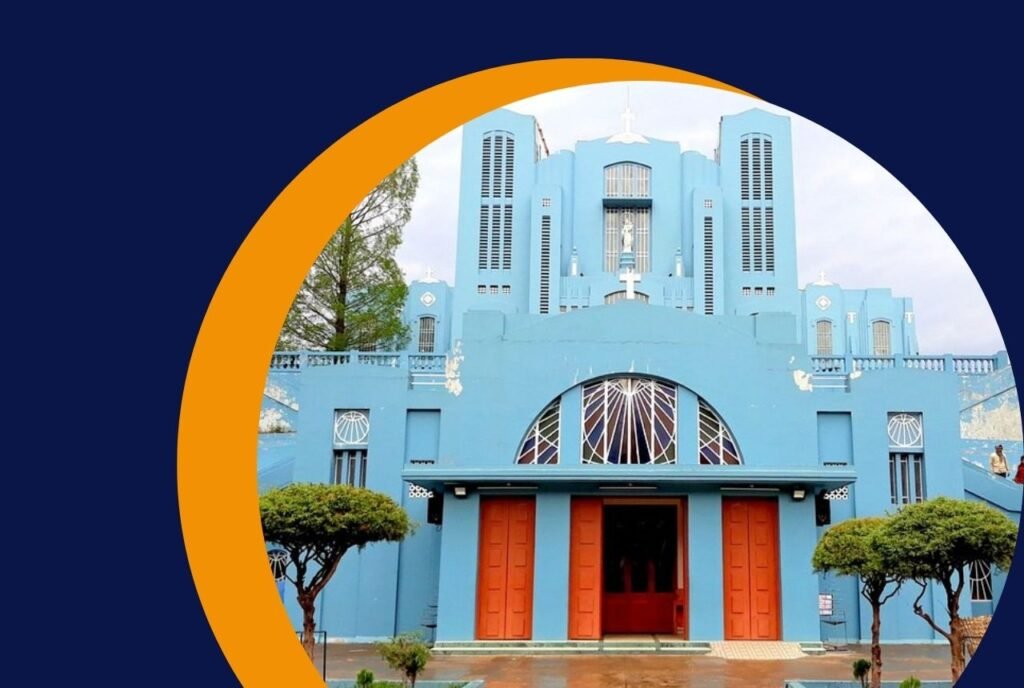
2. All Saints Church, Shillong
Established in 1877 near the State Central Library, All Saints Church is among the oldest ecclesiastical structures in Shillong. After the Great Assam Earthquake of 1897 reduced it to rubble, parishioners rebuilt it in 1902, retaining its colonial charm.
The red brick façade, arched doorways, and slender buttresses evoke classic English parish churches, while polished teak pews and stained-glass panels illustrate saints and gospel scenes.
Often filled with the aroma of incense, its wooden interiors and soft lighting create an atmosphere of contemplative warmth cherished by locals and tourists alike.
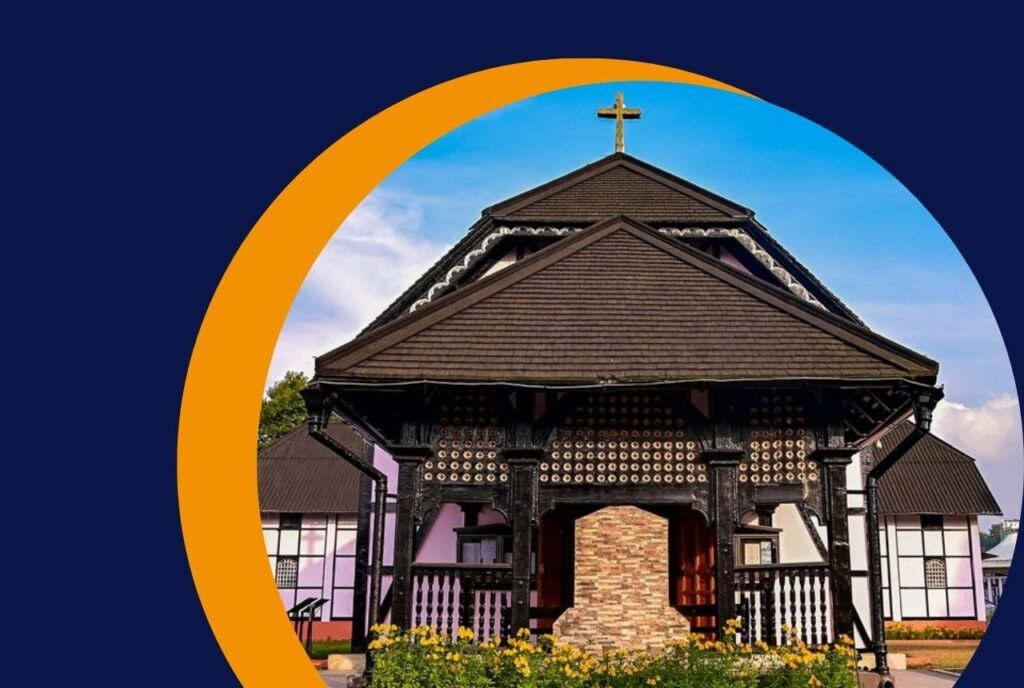
3. Nongsawlia Presbyterian Church (First Presbyterian Church), Cherrapunji
Founded in 1848, the Nongsawlia Presbyterian Church in Cherrapunji holds the distinction of being the first Christian church in Meghalaya. Its uncomplicated yet dignified design—whitewashed walls, gabled roof, and simple steeple—reflects Presbyterian emphasis on humility and community.
Adorned with hand-carved wooden pews and a modest pulpit, the church embodies the spirit of resilience, having withstood heavy monsoon rains and earthquakes over the centuries. For the Khasi community, it remains a living testament to the region’s earliest Christian converts and their enduring faith.
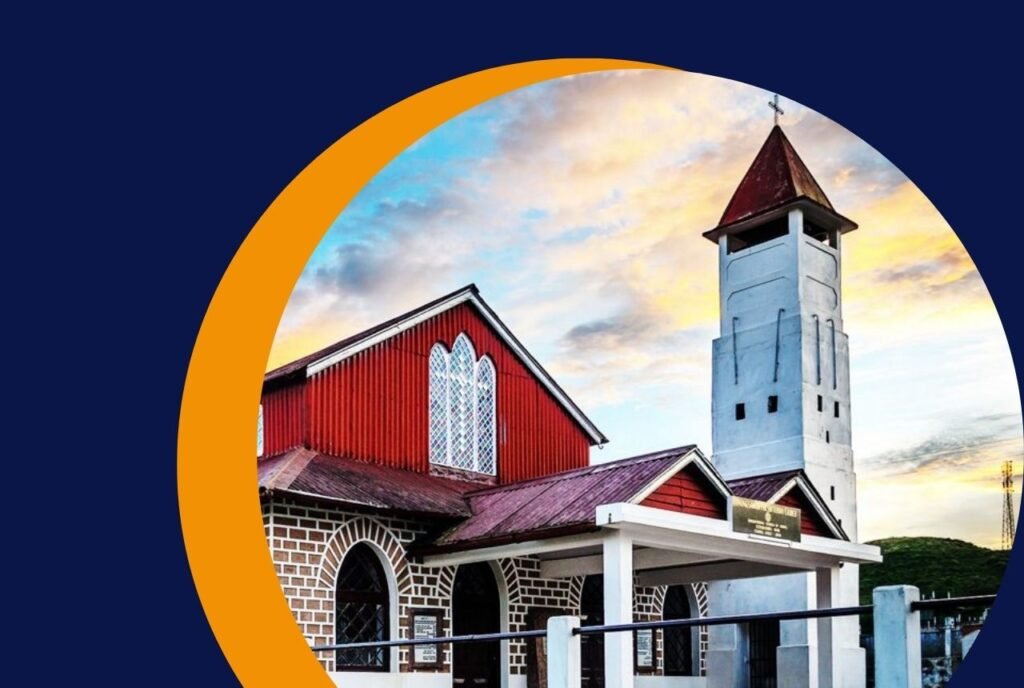
4. Laitumkhrah Presbyterian Church, Shillong
In the bustling Laitumkhrah neighborhood of Shillong, the 20th-century Presbyterian church stands out with its fan-shaped layout and vaulted ceilings. The expansive nave, flanked by slender columns, leads to a raised altar bathed in soft light from clerestory windows. Outside, a vibrant arts-and-crafts market flourishes on Sundays, drawing shoppers seeking Khasi textiles and hand-woven souvenirs.
Renowned for its choir and youth fellowship events, the church also hosts annual community fairs, strengthening its role as both a worship center and a hub for cultural exchange.
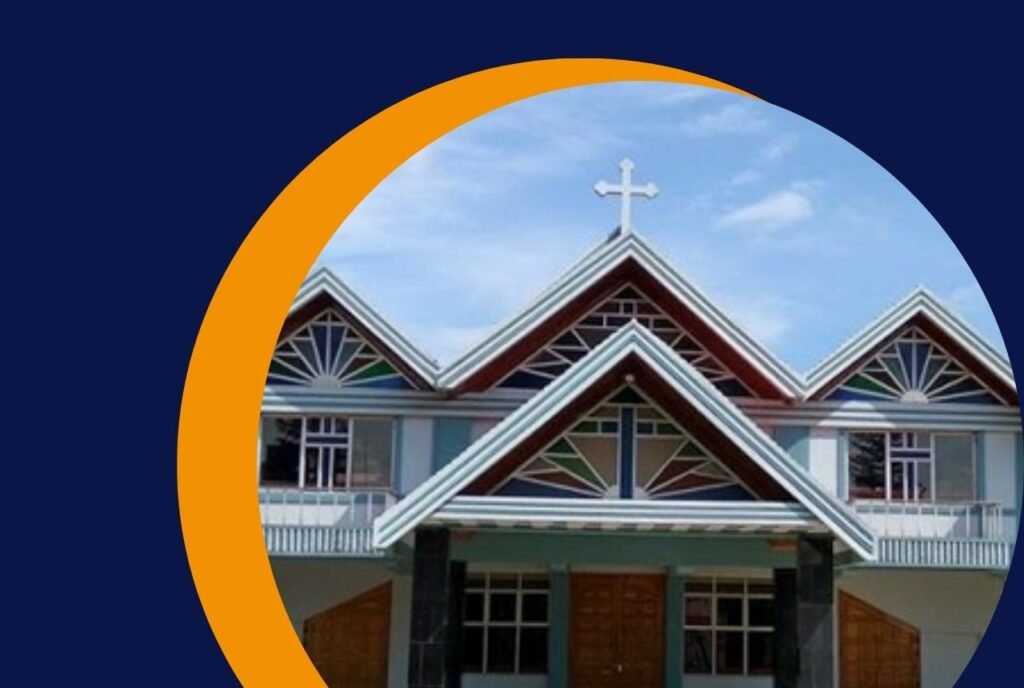
5. Church of Epiphany, Mawlynnong
Tucked within India’s famed “cleanest village,” Mawlynnong, the Church of Epiphany features simple European lines melded with local slate and bamboo accents. Its sloping roof and wide verandah protect congregants from frequent showers, while the manicured lawn and rose garden provide tranquil spaces for reflection.
Every Sunday, the melodious church choir fills the air, inviting villagers and visitors alike to join in hymn-singing. As a focal point of Mawlynnong’s tight-knit community, it exemplifies how faith and environmental stewardship coexist harmoniously.

The Spiritual and Cultural Impact of Churches in Meghalaya
Churches in Meghalaya have profoundly shaped local customs, education, and social welfare. Beyond spiritual nourishment, mission schools attached to many churches pioneered literacy, healthcare, and women’s empowerment in remote hill areas.
Christmas and Easter celebrations blend Khasi dances, indigenous attire, and Western carols, illustrating a syncretic culture where tribal identity and Christian faith enrich each other. Churches double as community halls, hosting weddings, funerals, and youth camps that reinforce social bonds.
For Khasi, Garo, and Jaintia families, these sacred spaces offer more than rituals; they are repositories of shared memory, moral guidance, and collective hope, weaving faith into the very fabric of daily life.
Architectural Elements That Make Meghalaya’s Churches Unique
While pointed arches and steeples recur across Meghalaya’s churches, several distinctive features set them apart. Local materials—slate slabs for roofing, bamboo reinforcements, and Khasi-quartzite stone—ensure buildings withstand monsoon deluges and seismic activity. Interiors often showcase intricate woodcarving, with rosette patterns and tribal motifs framing pulpits and windows.
Many churches incorporate open verandahs and louvred windows for ventilation, adapting European forms to the cool, rainy climate. Conservationists today face challenges from weathering, urban expansion, and limited funding; yet, restoration drives led by dioceses and heritage groups aim to preserve these structures for future generations.
Experiencing the Divine: Visiting Meghalaya’s Churches
The ideal time to explore Meghalaya’s churches is between October and April, when skies are clear and festivals abound. Visitors should dress modestly—covering shoulders and knees—and remove shoes before entering sanctuaries.
Major events like Christmas midnight Mass in Shillong or Palm Sunday processions in Cherrapunji offer immersive experiences. Photography is generally permitted, though it’s courteous to seek permission before capturing services.
To fully appreciate these marvels, combine church visits with nearby natural attractions—Shillong Peak, Living Root Bridges, or waterfalls—creating a rich itinerary that marries spiritual reflection with Meghalaya’s famed beauty.
Where to Stay: Accommodation Options When Visiting Meghalaya’s Churches
Shillong, the gateway to Meghalaya, offers a range of accommodations from budget lodges to luxury resorts. For travelers arriving via Guwahati, Vishwaratna Hotel stands out as a premium three-star option: located near the airport and railway station, it boasts modern rooms, multi-cuisine dining, and warm Assamese hospitality.
From here, day tours to Shillong’s cathedrals and All Saints Church are easily arranged. Within Meghalaya, cozy guesthouses in Cherrapunji and Mawlynnong provide authentic village stays, while Shillong’s city center features boutique hotels and homestays that balance comfort with local charm.
Final Thoughts on the Beautiful Churches in Meghalaya
The beautiful churches in Meghalaya are more than architectural feats; they are living embodiments of faith, history, and cultural convergence. From the Gothic spires of Shillong to the humble whitewashed walls of Cherrapunji, these sanctuaries reflect a journey of spiritual transformation and community resilience.
As you wander through their hallowed halls and verdant grounds, you will discover how stone, glass, and timber coalesce into spaces that uplift the soul. Plan your pilgrimage to Meghalaya today, and witness firsthand the graceful harmony of architecture, nature, and devotion.
FAQs About Churches in Meghalaya
Are visitors of all faiths welcome in these churches?
Yes—Meghalaya’s churches warmly welcome guests of every background, encouraging respect and participation in non-liturgical activities.
What is the best season to visit churches in Meghalaya?
October to April offers clear skies and mild temperatures, ideal for sightseeing and festival attendance.
Are there any dress codes to follow when visiting?
Modest attire is recommended: shoulders and knees should be covered; removing shoes before entering is customary.
Can photography be done inside these churches?
Generally yes, but always ask for permission before photographing during services or in restricted areas.
How accessible are these churches for people with mobility issues?
Major churches in Shillong have ramps and accessible restrooms; smaller rural churches may have uneven pathways—checking in advance is advised.


